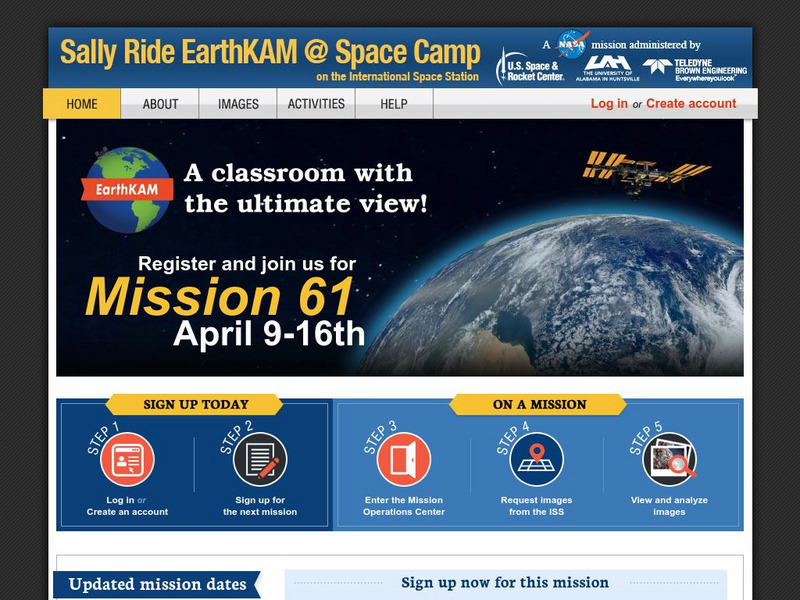Curated OER
Stream Ecology In Wisconsin and Puerto Rico
Students identify the different types of water and explain in what proportions they exist on Earth. They identify and correctly label the parts of the water cycle and how these parts interact with each other. Students identify the...
Curated OER
The Grand Canyon
Fourth graders study the Grand Canyon. They research the Grand Canyon and locate the Colorado River on the map of Arizona. They discuss erosion and read how sedimentary rock was formed. They view photographs of the Grand Canyon and...
Curated OER
River Planning
Students use a model to conduct an experiment involving dam construction. Based on their observations, they draw conclusions about social, economic, and and environmental issues and make a decision concerning dam location. As a group,...
Curated OER
Early Explorers
Fifth graders study early explorers. In this World history lesson, 5th graders draw an outline of a map labeling each part, build geographical features out of dough, and paint each of the land and water features.
Curated OER
Go With the Flow
Students experiment with a simulated river bed and examine how erosion takes place faster with a young, fast-moving river than with a slow, older river.
Curated OER
Sediment Tubes
Young scholars observe how different density soils and rocks behave in wind and in water. They make predictions and careful observations as they explore sediment transport and sediment rates in streams and rivers.
Curated OER
Junior Engineering Surface Water
Pupils experience the effects of pollution and erosion on a model of a watershed and explore ways to change the outcome.
Curated OER
Delta, Delta, Where is the Delta?
Students explore several images of Earth from space. They identify parts of deltas. They observe, label, and measure delta images, taken from space. They consider how deltas form and why they differ in shape.
University of Wisconsin
Follow the Drop
Young surveyors look for patterns in water flow around campus. Using a map of the school (that you will need to create), they mark the direction of the path of water. They also perform calculations for the volume that becomes runoff. The...
Curated OER
Soil Runoff Challenge
Learners find ways to decrease soil runoff for an African Village as a part of a Peace Corps project. In this soil runoff lesson plan, students play a soil runoff challenge online. Learners complete online activities and view a slide...
Curated OER
FOLLOW THAT WATER
Students build simple stream tables and vary the angle of the stream tables in order to simulate different flow rates and compare the results. They observe various features formed in a stream table by flowing water and compare these to...
Curated OER
Geology with Peanut Butter and Jelly
Learners will enjoy smashing the two tectonic sandwich plates together in faulting and compression fashions! They may even desire to capture their instructional destruction in a slideshow.
Curated OER
Processes of the Rock Cycle
Students explore, predict, and create each major rock form (sedimentary, metamorphic, and igneous) with colored modeling clay, discover cycle of rock formation, and examine important relationships of heat and pressure in rock development.
Curated OER
Let's Go! Virtual Yellowstone Tour
Pupils research the geologic wonders of Yellowstone National Park. They locate the main geologic features of Yellowstone on a map of the park. Students write a description of the geologic features to be included on the map for a...
Curated OER
Law of Superposition
Learners identify the law of superposition and it states that beds of rock in a series are laid down with the oldest at the bottom and younger layers on the top. They construct a legen for a block diagram and construct a block diagram...
Curated OER
Modeling the Rock Cycle
Students explore the differences in sedimentary, metamorphic, and igneous rocks. They discuss the rock cycle of the different formations. Students discuss how rock is formed into different shapes. They explore, predict, and create each...
Curated OER
Postcards from California: A Unit on Geography, Social Studies, History and California's Resources
Fourth graders examine patterns that influence population density in the various regions of California. The unit's three lessons utilize graphic organizers for the interpretation and presentation of data.
Curated OER
Watershed Model
Students view a presentation of water and land and how we need to protect our water resources. In this water lesson plan, students discuss how we rely on water, and complete activities in all subjects related to water.
Other
Siemens Science Day: Earth Science: Let's Get Carried Away!
This hands-on science activity allows students to use a stream table to learn about the processes of erosion and stream-bed formation. Students will understand the effect of water speed on erosion rate and stream formation.
CK-12 Foundation
Ck 12: Earth Science: Landforms From Stream Erosion and Deposition
[Free Registration/Login may be required to access all resource tools.] Explains how and where rivers erode and deposit sediments, including particles and dissolved ions.
US Geological Survey
Usgs Earth's Water: Rivers and the Landscape
Describes the formation of rivers and the transport of soil and sediment. Links to related material is provided within the text.
CK-12 Foundation
Ck 12: Fourth Grade: Earth Science: Erosion and Deposition by Flowing Water
[Free Registration/Login may be required to access all resource tools.] Discusses how flowing water causes erosion; describes how runoff, streams, and rivers change Earth's surface; and identifies features caused by groundwater erosion.
Other
Nasa: Iss Earth Kam
Students get a whole new perspective of the world through images obtained from the International Space Station. Students can even request images to be taken through ISS EarthKAM. Activities and educator guides are provided.
Orpheus Books
Q Files: Earth: Erosion: Rivers
Identify the upper waters, lower courses and whatever "falls" in between while studying the science of rivers.





















